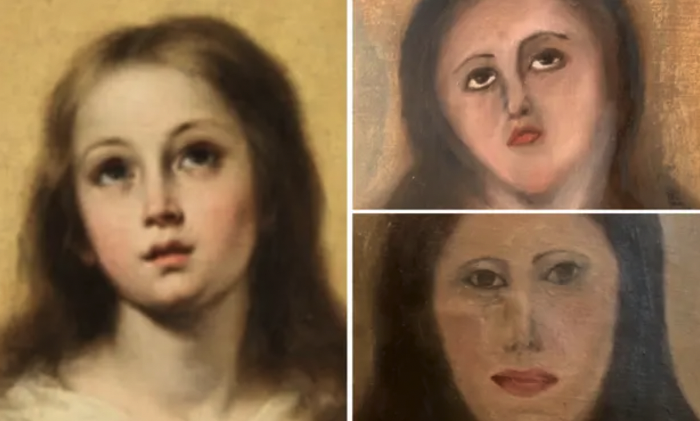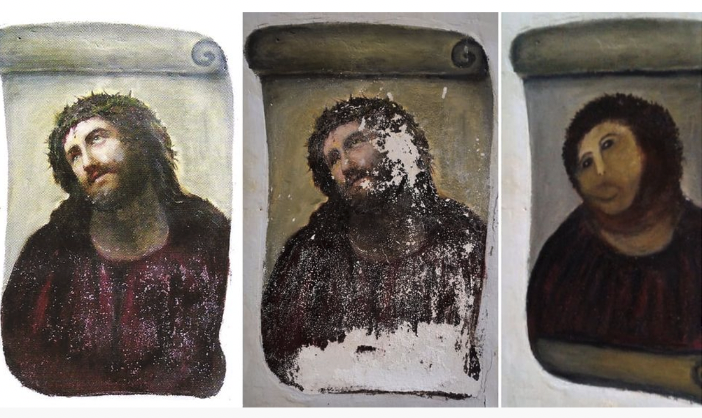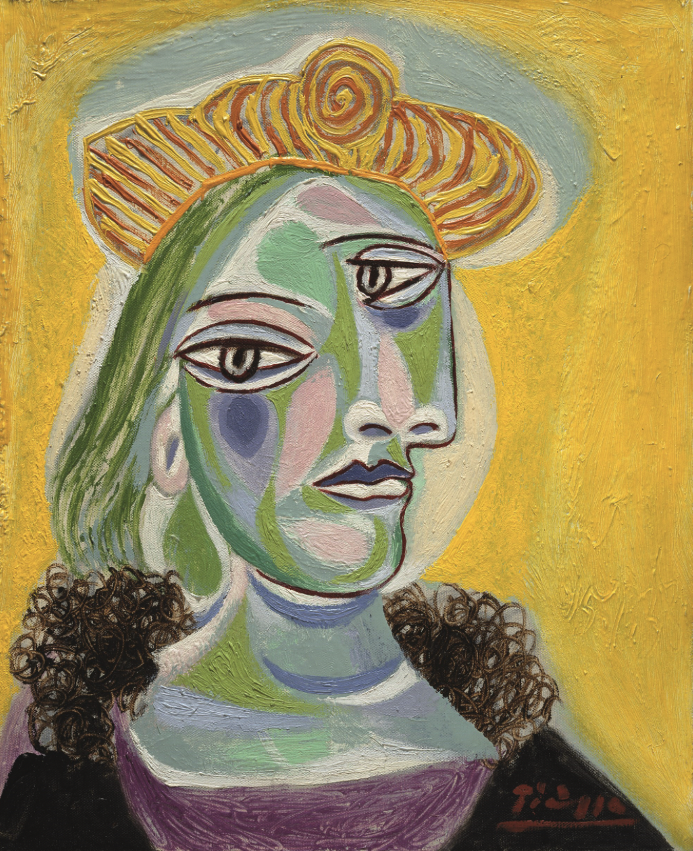Spain has made another bid for top spot in the hotly contested international league table of cultural vandalism, this time with an amateur statue re-carving reminiscent of Mr Potato Head.
The statue, on the façade of a high-street bank in the Spanish city of Palencia, was ‘repaired’ by an amateur after the head fell off. The substitute head was first noticed by local painter Antonio Capel, who published the find in a Facebook post, and joins a long list of destructive ‘restorations’ in the country.
Earlier this year, a copy of Murillo’s Virgin Mary was so badly ‘restored’ it was sent for a second attempt, only to end up even more irreparably ruined.

And the most famous of all was the 2012 ‘restoration’ of an Elias Garcia Martinez fresco in Borja, dubbed ‘Monkey Christ’ which was so monstrous it triggered a rash of Monkey Christ Halloween costumes.

At a practical level, these botched restorations may simply be a byproduct of the fact that to study fine art in contemporary terms in no way implies any training in the skills once considered essential to fine art.
Michelangelo’s students spent years imitating the work of the master, or copying sculptures from the ancient world, before being let loose to try and realise their own vision. In contrast, contemporary artists commonly exist in a tortured relation to the past: at once pinned in relation to art history but duty-bound by contemporary neophilia to reject the canon in search of ‘originality’.
Because originality matters more than artistic skill, many fine art students today can’t draw, paint or sculpt and don’t consider this in any way an impediment to their artistic practice. If this condition permeates throughout European art schools, it’s perhaps unsurprising that even those who aspire to make (or restore) beautiful things lack the skill.
But what if it goes deeper? A striking feature of these botched works is how similar they are: the same flat affect, the same two-dimensional quality, the same oddly floating eyes. In Ways of Seeing the art critic John Berger wrote: “The way we see things is affected by what we know or what we believe. […] We only see what we look at. To look is an act of choice.” It is almost as if the restorers all learned their craft, or at least their way of seeing, at the same school.
In a sense, this is true: one of the most influential Spanish artists to emerge since these now-ruined artworks were originally created was Picasso, whose determinedly non-naturalistic, multidimensional portraits pioneered the free-floating eyes now appearing all over ‘restored’ Spanish artworks. Perhaps at some level Spain’s artists today simply see the world in a post-Picasso way, and are unable to step back into the mindset that animated a Murillo or Martinez.

If this is so — and I think it may be — then it’s not unique to Spain, and the implication is unsettling. It suggests that despite a growing chorus of calls for Western culture to turn back toward a more classical vision of beauty, for example in architecture, it’s unclear whether such a thing would even be possible without a revolution in our way of seeing.










Join the discussion
Join like minded readers that support our journalism by becoming a paid subscriber
To join the discussion in the comments, become a paid subscriber.
Join like minded readers that support our journalism, read unlimited articles and enjoy other subscriber-only benefits.
Subscribe